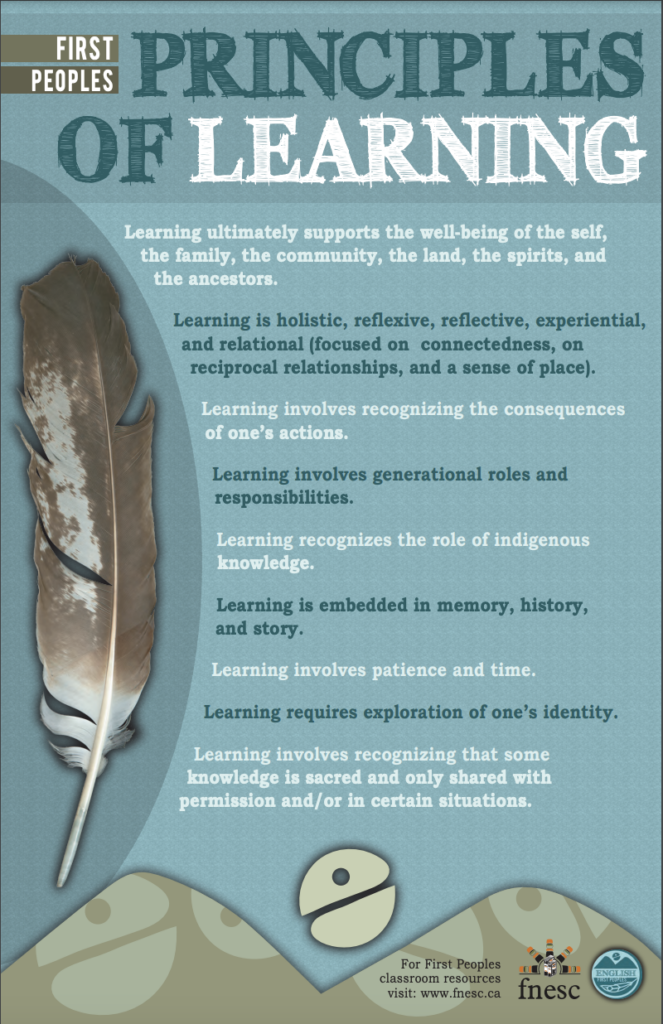What are they?
“This poster describes a set of learning principles specific to First Peoples. The First Peoples Principles of Learning were articulated by Indigenous Elders, scholars and knowledge keepers to guide the development of the curriculum and teaching of the the English First Peoples course created by the BC Ministry of Education and First Nations Education Steering Committee in 2006/2007.” (FNESC).
What do they represent?
“They represent an attempt to identify common elements in the varied teaching and learning approaches that prevail within particular First Nations societies. It must be recognized that they do not capture the full reality of the approach used in any single First Peoples’ society.” (FNESC)
Check out the poster below, and the FPPL in a text format for copying and pasting into lesson plans. All of this information is taken directly from the First Nations Education Steering Committee (FNESC)

The Principles are as follows:
- Learning ultimately supports the well-being of the self, the family, the community, the land, the spirits, and the ancestors.
- Learning is holistic, reflexive, reflective, experiential, and relational (focused on connectedness, on reciprocal relationships, and a sense of place).
- Learning involves recognizing the consequences of one‘s actions.
- Learning involves generational roles and responsibilities.
- Learning recognizes the role of Indigenous knowledge.
- Learning is embedded in memory, history, and story.
- Learning involves patience and time.
- Learning requires exploration of one‘s identity.
- Learning involves recognizing that some knowledge is sacred and only shared with permission and/or in certain situations.
Thank you so much to the First Nations Education Steering Committee for these wonderful resources. Please go check out their site for authentic Indigenous resources, programs, and more!